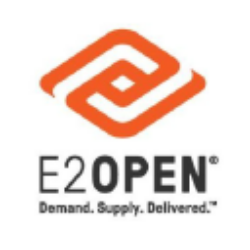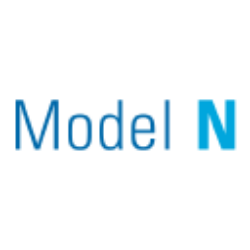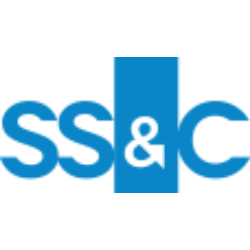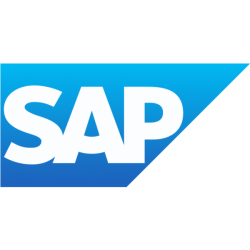OTEX

Open Text Corporation
OTEX
(2.5)28,91 USD
11% ROA
11.37% ROE
19.36x PER
8.903.908.000,00 USD
154.17% DER
3.05% Yield
8.36% NPM
Open Text Corporation Stock Analysis
Open Text Corporation Fundamental Analysis
Fundamental analysis in stock investing is like studying the foundation of a house before buying it. It involves looking at a company's financial health, like its earnings, assets, and debts, to determine if it's a good investment based on its fundamental strength and potential for growth.
| # | Analysis | Rating |
|---|---|---|
| 1 |
Revenue Growth
With continuous growth in revenue over the last five years, this company has proven to be a lucrative investment option, showcasing its strong financial performance. |
|
| 2 |
Dividend Growth
The company has demonstrated exceptional dividend growth over the past five years, consistently increasing payouts to shareholders year after year. |
|
| 3 |
Dividend
Shareholders can rely on the company's remarkable dividend history, consistently paying dividends for the past five years, demonstrating a steadfast dedication to rewarding investors. |
|
| 4 |
ROE
The stock's ROE falls within an average range (8.56%), demonstrating satisfactory profitability and efficiency in utilizing shareholders' equity. |
|
| 5 |
ROA
The stock's ROA (8.6%) indicates that it's doing well in making money from the things it owns. This makes it a good option to invest and make consistent profits. |
|
| 6 |
PBV
The stock's PBV ratio (2.62x) reflects a fair valuation, making it an attractive option for investors seeking balanced opportunities. |
|
| 7 |
Buffet Intrinsic Value
The company's stock shows potential as it is undervalued (722) according to Warren Buffett's formula, indicating that its intrinsic value exceeds the market price. |
|
| 8 |
DER
The company has a high debt to equity ratio (225%), which means it owes a lot of money compared to what it actually owns, making it financially risky. |
|
| 9 |
Net Profit Growth
The net profit of this company has shown no signs of growth over the last five years, suggesting limited profitability and making it a less attractive investment opportunity. |
|
| 10 |
Assets Growth
Company's revenue has remained stagnant over the past three years, indicating a lack of growth and making it a less favorable option. |
|
| 11 |
Graham Number
The company's Graham number indicates that it is overvalued compared to its stock price, suggesting a potentially unfavorable investment opportunity. |
Open Text Corporation Technical Analysis
Technical analysis in stock investing is like reading the patterns on a weather map to predict future weather conditions. It involves studying past stock price movements and trading volumes to make predictions about where a stock's price might go next, without necessarily looking at the company's financial health.
| # | Analysis | Recommendation |
|---|---|---|
| 1 | Awesome Oscillator | Buy |
| 2 | MACD | Buy |
| 3 | RSI | Sell |
| 4 | Stoch RSI | Sell |
Open Text Corporation Price Chart
Financial Statements
Financial statements are like report cards for companies. They show how much money a company makes (income statement), what it owns and owes (balance sheet), and where it spends its money (cash flow statement), helping stock investors understand if a company is healthy and worth investing in.
Income Statements
An income statement for a company is like a scoreboard for its profits and losses. It shows how much money the company made (revenue) and how much it spent to make that money (expenses), helping stock investors see if a company is making a profit or not.
Revenue in stock investing is the total amount of money a company earns from its sales, and it's a key factor that investors consider to assess a company's financial performance and growth potential.
| Year | Revenue | Growth |
|---|---|---|
| 1996 | 10.000.000 | |
| 1997 | 22.600.000 | 55.75% |
| 1998 | 45.300.000 | 50.11% |
| 1999 | 92.500.000 | 51.03% |
| 2000 | 112.945.000 | 18.1% |
| 2001 | 147.699.000 | 23.53% |
| 2002 | 152.477.000 | 3.13% |
| 2003 | 177.725.000 | 14.21% |
| 2004 | 291.058.000 | 38.94% |
| 2005 | 414.828.000 | 29.84% |
| 2006 | 409.562.000 | -1.29% |
| 2007 | 595.664.000 | 31.24% |
| 2008 | 725.532.000 | 17.9% |
| 2009 | 785.665.000 | 7.65% |
| 2010 | 912.023.000 | 13.85% |
| 2011 | 1.033.303.000 | 11.74% |
| 2012 | 1.207.473.000 | 14.42% |
| 2013 | 1.363.336.000 | 11.43% |
| 2014 | 1.624.699.000 | 16.09% |
| 2015 | 1.851.917.000 | 12.27% |
| 2016 | 1.824.228.000 | -1.52% |
| 2017 | 2.291.057.000 | 20.38% |
| 2018 | 2.815.241.000 | 18.62% |
| 2019 | 2.868.755.000 | 1.87% |
| 2020 | 3.109.736.000 | 7.75% |
| 2021 | 3.386.115.000 | 8.16% |
| 2022 | 3.493.844.000 | 3.08% |
| 2023 | 4.484.980.000 | 22.1% |
| 2024 | 5.769.577.000 | 22.27% |
Research and Development Expenses are the costs a company incurs to create and improve its products or services, which can be important for investors to evaluate a company's innovation and potential for future growth.
| Year | Research and Development Expenses | Growth |
|---|---|---|
| 1996 | 0 | |
| 1997 | 6.600.000 | 100% |
| 1998 | 7.900.000 | 16.46% |
| 1999 | 11.400.000 | 30.7% |
| 2000 | 17.743.000 | 35.75% |
| 2001 | 24.311.000 | 27.02% |
| 2002 | 24.071.000 | -1% |
| 2003 | 29.324.000 | 17.91% |
| 2004 | 43.616.000 | 32.77% |
| 2005 | 65.139.000 | 33.04% |
| 2006 | 59.184.000 | -10.06% |
| 2007 | 79.063.000 | 25.14% |
| 2008 | 105.894.000 | 25.34% |
| 2009 | 116.164.000 | 8.84% |
| 2010 | 129.378.000 | 10.21% |
| 2011 | 145.992.000 | 11.38% |
| 2012 | 169.043.000 | 13.64% |
| 2013 | 164.010.000 | -3.07% |
| 2014 | 176.834.000 | 7.25% |
| 2015 | 196.491.000 | 10% |
| 2016 | 194.057.000 | -1.25% |
| 2017 | 281.680.000 | 31.11% |
| 2018 | 323.461.000 | 12.92% |
| 2019 | 321.836.000 | -0.5% |
| 2020 | 370.411.000 | 13.11% |
| 2021 | 421.447.000 | 12.11% |
| 2022 | 440.448.000 | 4.31% |
| 2023 | 680.587.000 | 35.28% |
| 2024 | 1.137.854.000 | 40.19% |
General and Administrative Expenses are the costs a company incurs to run its day-to-day operations, such as office rent, salaries, and utilities, which investors consider to understand a company's overall efficiency and management effectiveness.
| Year | General and Administrative Expenses | Growth |
|---|---|---|
| 1996 | 0 | |
| 1997 | 0 | 0% |
| 1998 | 0 | 0% |
| 1999 | 0 | 0% |
| 2000 | 0 | 0% |
| 2001 | 0 | 0% |
| 2002 | 63.582.000 | 100% |
| 2003 | 13.509.000 | -370.66% |
| 2004 | 22.795.000 | 40.74% |
| 2005 | 46.110.000 | 50.56% |
| 2006 | 45.336.000 | -1.71% |
| 2007 | 62.140.000 | 27.04% |
| 2008 | 69.985.000 | 11.21% |
| 2009 | 73.842.000 | 5.22% |
| 2010 | 83.295.000 | 11.35% |
| 2011 | 86.696.000 | 3.92% |
| 2012 | 97.072.000 | 10.69% |
| 2013 | 109.325.000 | 11.21% |
| 2014 | 142.450.000 | 23.25% |
| 2015 | 163.042.000 | 12.63% |
| 2016 | 140.397.000 | -16.13% |
| 2017 | 170.438.000 | 17.63% |
| 2018 | 205.313.000 | 16.99% |
| 2019 | 207.909.000 | 1.25% |
| 2020 | 237.532.000 | 12.47% |
| 2021 | 263.521.000 | 9.86% |
| 2022 | 317.085.000 | 16.89% |
| 2023 | 419.590.000 | 24.43% |
| 2024 | 577.038.000 | 27.29% |
EBITDA stands for Earnings Before Interest, Taxes, Depreciation, and Amortization. It is a measure that helps stock investors analyze a company's profitability by looking at its earnings without considering certain expenses. This helps to get a clearer picture of the company's financial performance and its ability to generate cash flow.
| Year | EBITDA | Growth |
|---|---|---|
| 1996 | 10.000.000 | |
| 1997 | -13.000.000 | 176.92% |
| 1998 | 1.948.000 | 767.35% |
| 1999 | 19.000.000 | 89.75% |
| 2000 | 200.000 | -9400% |
| 2001 | 20.405.000 | 99.02% |
| 2002 | 25.603.000 | 20.3% |
| 2003 | 26.918.000 | 4.89% |
| 2004 | 58.883.000 | 54.29% |
| 2005 | 63.033.000 | 6.58% |
| 2006 | 78.335.000 | 19.53% |
| 2007 | 139.277.000 | 43.76% |
| 2008 | 100.379.000 | -38.75% |
| 2009 | 187.350.000 | 46.42% |
| 2010 | 213.782.000 | 12.36% |
| 2011 | 273.716.000 | 21.9% |
| 2012 | 312.394.000 | 12.38% |
| 2013 | 382.043.000 | 18.23% |
| 2014 | 490.646.000 | 22.13% |
| 2015 | 560.811.000 | 12.51% |
| 2016 | 609.508.000 | 7.99% |
| 2017 | 729.702.245 | 16.47% |
| 2018 | 941.878.495 | 22.53% |
| 2019 | 1.048.989.000 | 10.21% |
| 2020 | 986.133.942 | -6.37% |
| 2021 | 1.326.798.000 | 25.68% |
| 2022 | 1.182.481.000 | -12.2% |
| 2023 | 1.261.598.000 | 6.27% |
| 2024 | 2.091.105.700 | 39.67% |
Gross profit is the money a company makes from selling its products or services after subtracting the cost of producing or providing them, and it is an important measure for investors to understand a company's profitability.
| Year | Gross Profit | Growth |
|---|---|---|
| 1996 | 10.000.000 | |
| 1997 | 15.100.000 | 33.77% |
| 1998 | 61.600.000 | 75.49% |
| 1999 | 76.200.000 | 19.16% |
| 2000 | 80.703.000 | 5.58% |
| 2001 | 109.224.000 | 26.11% |
| 2002 | 113.256.000 | 3.56% |
| 2003 | 132.528.000 | 14.54% |
| 2004 | 212.656.000 | 37.68% |
| 2005 | 288.835.000 | 26.37% |
| 2006 | 268.374.000 | -7.62% |
| 2007 | 394.112.000 | 31.9% |
| 2008 | 492.801.000 | 20.03% |
| 2009 | 533.828.000 | 7.69% |
| 2010 | 615.492.000 | 13.27% |
| 2011 | 692.283.000 | 11.09% |
| 2012 | 789.455.000 | 12.31% |
| 2013 | 877.432.000 | 10.03% |
| 2014 | 1.113.029.000 | 21.17% |
| 2015 | 1.250.132.000 | 10.97% |
| 2016 | 1.250.228.000 | 0.01% |
| 2017 | 1.528.666.000 | 18.21% |
| 2018 | 1.863.830.000 | 17.98% |
| 2019 | 1.938.052.000 | 3.83% |
| 2020 | 2.105.961.000 | 7.97% |
| 2021 | 2.351.649.000 | 10.45% |
| 2022 | 2.431.643.000 | 3.29% |
| 2023 | 3.168.393.000 | 23.25% |
| 2024 | 4.191.028.000 | 24.4% |
Net income in stock investing is like the money a company actually gets to keep as profit after paying all its bills, and it's an important measure to understand how well a company is doing financially.
| Year | Net Profit | Growth |
|---|---|---|
| 1996 | -43.200.000 | |
| 1997 | -28.200.000 | -53.19% |
| 1998 | -23.500.000 | -20% |
| 1999 | 20.200.000 | 216.34% |
| 2000 | 25.079.000 | 19.45% |
| 2001 | 10.796.000 | -132.3% |
| 2002 | 16.671.000 | 35.24% |
| 2003 | 27.757.000 | 39.94% |
| 2004 | 23.298.000 | -19.14% |
| 2005 | 20.359.000 | -14.44% |
| 2006 | 4.978.000 | -308.98% |
| 2007 | 21.660.000 | 77.02% |
| 2008 | 53.006.000 | 59.14% |
| 2009 | 56.938.000 | 6.91% |
| 2010 | 87.554.000 | 34.97% |
| 2011 | 123.203.000 | 28.94% |
| 2012 | 125.174.000 | 1.57% |
| 2013 | 148.520.000 | 15.72% |
| 2014 | 218.125.000 | 31.91% |
| 2015 | 234.327.000 | 6.91% |
| 2016 | 284.477.000 | 17.63% |
| 2017 | 1.025.659.000 | 72.26% |
| 2018 | 242.224.000 | -323.43% |
| 2019 | 285.501.000 | 15.16% |
| 2020 | 234.225.000 | -21.89% |
| 2021 | 310.672.000 | 24.61% |
| 2022 | 397.090.000 | 21.76% |
| 2023 | 150.379.000 | -164.06% |
| 2024 | 465.090.000 | 67.67% |
EPS, or earnings per share, is a measure that shows how much profit a company has earned for each outstanding share of its stock, and it is important for stock investors as it helps understand the profitability of a company and compare it with other companies in the market.
| Year | Earning per Share (EPS) | Growth |
|---|---|---|
| 1996 | 0 | |
| 1997 | 0 | 0% |
| 1998 | 0 | 0% |
| 1999 | 0 | 0% |
| 2000 | 0 | 0% |
| 2001 | 0 | 0% |
| 2002 | 0 | 0% |
| 2003 | 0 | 0% |
| 2004 | 0 | 0% |
| 2005 | 0 | 0% |
| 2006 | 0 | 0% |
| 2007 | 0 | 0% |
| 2008 | 0 | 0% |
| 2009 | 0 | 0% |
| 2010 | 0 | 0% |
| 2011 | 1 | 0% |
| 2012 | 1 | 0% |
| 2013 | 1 | 0% |
| 2014 | 1 | 0% |
| 2015 | 1 | 0% |
| 2016 | 1 | 100% |
| 2017 | 4 | 75% |
| 2018 | 1 | 0% |
| 2019 | 1 | 100% |
| 2020 | 1 | 0% |
| 2021 | 1 | 100% |
| 2022 | 1 | 0% |
| 2023 | 1 | 0% |
| 2024 | 2 | 100% |
Cashflow Statements
Cashflow statements show the movement of money in and out of a company, helping stock investors understand how much money a company makes and spends. By examining cashflow statements, investors can assess if a company is generating enough cash to pay its bills, invest in growth, and provide returns to stockholders.
Free cash flow is the leftover cash that a company generates after covering its operating expenses and capital expenditures, which is important for stock investors as it shows how much money a company has available to invest in growth, pay dividends, or reduce debt.
| Year | Free Cashflow | Growth |
|---|---|---|
| 1997 | -17.900.000 | |
| 1998 | -25.100.000 | 28.69% |
| 1999 | -7.700.000 | -225.97% |
| 2000 | 19.322.000 | 139.85% |
| 2001 | 5.981.000 | -223.06% |
| 2002 | 26.250.000 | 77.22% |
| 2003 | 36.404.000 | 27.89% |
| 2004 | 31.407.000 | -15.91% |
| 2005 | 39.355.000 | 20.2% |
| 2006 | 41.520.000 | 5.21% |
| 2007 | 105.604.000 | 60.68% |
| 2008 | 159.081.000 | 33.62% |
| 2009 | 164.020.000 | 3.01% |
| 2010 | 160.877.000 | -1.95% |
| 2011 | 186.559.000 | 13.77% |
| 2012 | 240.469.000 | 22.42% |
| 2013 | 295.203.000 | 18.54% |
| 2014 | 374.667.000 | 21.21% |
| 2015 | 445.985.000 | 15.99% |
| 2016 | 455.713.000 | 2.13% |
| 2017 | 359.661.000 | -26.71% |
| 2018 | 604.567.000 | 40.51% |
| 2019 | 812.441.000 | 25.59% |
| 2020 | 881.827.000 | 7.87% |
| 2021 | 812.445.000 | -8.54% |
| 2022 | 888.701.000 | 8.58% |
| 2023 | 655.373.000 | -35.6% |
| 2024 | 143.276.640 | -357.42% |
Operating cash flow represents the cash generated or consumed by a company's day-to-day operations, excluding external investing or financing activities, and is crucial for stock investors as it shows how much cash a company is generating from its core business operations.
| Year | Operating Cashflow | Growth |
|---|---|---|
| 1997 | -15.300.000 | |
| 1998 | -8.100.000 | -88.89% |
| 1999 | 2.800.000 | 389.29% |
| 2000 | 26.377.000 | 89.38% |
| 2001 | 11.762.000 | -124.26% |
| 2002 | 28.498.000 | 58.73% |
| 2003 | 40.019.000 | 28.79% |
| 2004 | 37.519.000 | -6.66% |
| 2005 | 57.264.000 | 34.48% |
| 2006 | 60.798.000 | 5.81% |
| 2007 | 110.864.000 | 45.16% |
| 2008 | 165.976.000 | 33.2% |
| 2009 | 176.170.000 | 5.79% |
| 2010 | 180.191.000 | 2.23% |
| 2011 | 223.221.000 | 19.28% |
| 2012 | 266.490.000 | 16.24% |
| 2013 | 318.502.000 | 16.33% |
| 2014 | 417.127.000 | 23.64% |
| 2015 | 523.031.000 | 20.25% |
| 2016 | 525.722.000 | 0.51% |
| 2017 | 439.253.000 | -19.69% |
| 2018 | 709.885.000 | 38.12% |
| 2019 | 876.278.000 | 18.99% |
| 2020 | 954.536.000 | 8.2% |
| 2021 | 876.120.000 | -8.95% |
| 2022 | 981.810.000 | 10.76% |
| 2023 | 779.205.000 | -26% |
| 2024 | 183.448.520 | -324.75% |
Capex, short for capital expenditures, refers to the money a company spends on acquiring or upgrading tangible assets like buildings, equipment, or technology, which is important for stock investors as it indicates how much a company is investing in its infrastructure to support future growth and profitability.
| Year | Capital Expenditure | Growth |
|---|---|---|
| 1997 | 2.600.000 | |
| 1998 | 17.000.000 | 84.71% |
| 1999 | 10.500.000 | -61.9% |
| 2000 | 7.055.000 | -48.83% |
| 2001 | 5.781.000 | -22.04% |
| 2002 | 2.248.000 | -157.16% |
| 2003 | 3.615.000 | 37.81% |
| 2004 | 6.112.000 | 40.85% |
| 2005 | 17.909.000 | 65.87% |
| 2006 | 19.278.000 | 7.1% |
| 2007 | 5.260.000 | -266.5% |
| 2008 | 6.895.000 | 23.71% |
| 2009 | 12.150.000 | 43.25% |
| 2010 | 19.314.000 | 37.09% |
| 2011 | 36.662.000 | 47.32% |
| 2012 | 26.021.000 | -40.89% |
| 2013 | 23.299.000 | -11.68% |
| 2014 | 42.460.000 | 45.13% |
| 2015 | 77.046.000 | 44.89% |
| 2016 | 70.009.000 | -10.05% |
| 2017 | 79.592.000 | 12.04% |
| 2018 | 105.318.000 | 24.43% |
| 2019 | 63.837.000 | -64.98% |
| 2020 | 72.709.000 | 12.2% |
| 2021 | 63.675.000 | -14.19% |
| 2022 | 93.109.000 | 31.61% |
| 2023 | 123.832.000 | 24.81% |
| 2024 | 40.171.880 | -208.26% |
Balance Sheet
Balance sheets provide a snapshot of a company's financial health and its assets (such as cash, inventory, and property) and liabilities (like debts and obligations) at a specific point in time. For stock investors, balance sheets help assess the company's overall worth and evaluate its ability to meet financial obligations and support future growth.
Equity refers to the ownership interest or stake that shareholders have in a company, representing their claim on its assets and earnings after all debts and liabilities are paid.
| Year | Equity | Growth |
|---|---|---|
| 1997 | 45.000.000 | |
| 1998 | 55.900.000 | 19.5% |
| 1999 | 232.800.000 | 75.99% |
| 2000 | 137.983.000 | -68.72% |
| 2001 | 133.027.000 | -3.73% |
| 2002 | 144.031.000 | 7.64% |
| 2003 | 162.397.000 | 11.31% |
| 2004 | 443.056.000 | 63.35% |
| 2005 | 420.186.000 | -5.44% |
| 2006 | 464.175.000 | 9.48% |
| 2007 | 531.043.000 | 12.59% |
| 2008 | 644.833.000 | 17.65% |
| 2009 | 686.464.000 | 6.06% |
| 2010 | 886.220.000 | 22.54% |
| 2011 | 1.039.445.000 | 14.74% |
| 2012 | 1.179.392.000 | 11.87% |
| 2013 | 1.337.208.000 | 11.8% |
| 2014 | 1.642.167.000 | 18.57% |
| 2015 | 1.829.807.000 | 10.25% |
| 2016 | 1.979.197.000 | 7.55% |
| 2017 | 3.533.319.000 | 43.98% |
| 2018 | 3.717.258.000 | 4.95% |
| 2019 | 3.884.670.000 | 4.31% |
| 2020 | 4.006.709.000 | 3.05% |
| 2021 | 4.099.453.000 | 2.26% |
| 2022 | 4.032.260.000 | -1.67% |
| 2023 | 4.022.104.000 | -0.25% |
| 2024 | 4.199.065.095 | 4.21% |
Assets represent the valuable resources that a company owns, such as cash, inventory, property, and equipment, and understanding a company's assets helps investors assess its value and potential for generating future profits.
| Year | Assets | Growth |
|---|---|---|
| 1997 | 54.800.000 | |
| 1998 | 83.400.000 | 34.29% |
| 1999 | 264.800.000 | 68.5% |
| 2000 | 183.250.000 | -44.5% |
| 2001 | 175.002.000 | -4.71% |
| 2002 | 186.847.000 | 6.34% |
| 2003 | 238.687.000 | 21.72% |
| 2004 | 670.755.000 | 64.42% |
| 2005 | 640.936.000 | -4.65% |
| 2006 | 671.093.000 | 4.49% |
| 2007 | 1.326.845.000 | 49.42% |
| 2008 | 1.434.676.000 | 7.52% |
| 2009 | 1.507.236.000 | 4.81% |
| 2010 | 1.714.024.000 | 12.06% |
| 2011 | 1.932.363.000 | 11.3% |
| 2012 | 2.444.293.000 | 20.94% |
| 2013 | 2.654.817.000 | 7.93% |
| 2014 | 3.918.638.000 | 32.25% |
| 2015 | 4.388.495.000 | 10.71% |
| 2016 | 5.154.144.000 | 14.86% |
| 2017 | 7.480.562.000 | 31.1% |
| 2018 | 7.765.029.000 | 3.66% |
| 2019 | 7.933.975.000 | 2.13% |
| 2020 | 10.234.822.000 | 22.48% |
| 2021 | 9.609.336.000 | -6.51% |
| 2022 | 10.178.973.000 | 5.6% |
| 2023 | 17.089.200.000 | 40.44% |
| 2024 | 14.203.623.662 | -20.32% |
Liabilities refer to the financial obligations or debts that a company owes to creditors or external parties, and understanding a company's liabilities is important for investors as it helps assess the company's financial risk and ability to meet its obligations.
| Year | Liabilities | Growth |
|---|---|---|
| 1997 | 9.800.000 | |
| 1998 | 27.500.000 | 64.36% |
| 1999 | 32.000.000 | 14.06% |
| 2000 | 45.267.000 | 29.31% |
| 2001 | 41.975.000 | -7.84% |
| 2002 | 42.816.000 | 1.96% |
| 2003 | 76.290.000 | 43.88% |
| 2004 | 227.699.000 | 66.5% |
| 2005 | 220.750.000 | -3.15% |
| 2006 | 206.918.000 | -6.68% |
| 2007 | 795.802.000 | 74% |
| 2008 | 789.843.000 | -0.75% |
| 2009 | 820.772.000 | 3.77% |
| 2010 | 827.804.000 | 0.85% |
| 2011 | 892.918.000 | 7.29% |
| 2012 | 1.264.901.000 | 29.41% |
| 2013 | 1.317.609.000 | 4% |
| 2014 | 2.276.471.000 | 42.12% |
| 2015 | 2.558.688.000 | 11.03% |
| 2016 | 3.174.947.000 | 19.41% |
| 2017 | 3.947.243.000 | 19.57% |
| 2018 | 4.047.771.000 | 2.48% |
| 2019 | 4.049.305.000 | 0.04% |
| 2020 | 6.228.113.000 | 34.98% |
| 2021 | 5.509.883.000 | -13.04% |
| 2022 | 6.146.713.000 | 10.36% |
| 2023 | 13.067.096.000 | 52.96% |
| 2024 | 10.004.558.566 | -30.61% |
Open Text Corporation Financial Ratio (TTM)
Valuation Metrics
- Revenue per Share
- 21.25
- Net Income per Share
- 1.72
- Price to Earning Ratio
- 19.36x
- Price To Sales Ratio
- 1.55x
- POCF Ratio
- 9.35
- PFCF Ratio
- 11.07
- Price to Book Ratio
- 2.14
- EV to Sales
- 2.48
- EV Over EBITDA
- 7.88
- EV to Operating CashFlow
- 14.86
- EV to FreeCashFlow
- 17.8
- Earnings Yield
- 0.05
- FreeCashFlow Yield
- 0.09
- Market Cap
- 8,90 Bil.
- Enterprise Value
- 14,31 Bil.
- Graham Number
- 24.44
- Graham NetNet
- -30.05
Income Statement Metrics
- Net Income per Share
- 1.72
- Income Quality
- 2.07
- ROE
- 0.11
- Return On Assets
- 0.03
- Return On Capital Employed
- 0.08
- Net Income per EBT
- 0.65
- EBT Per Ebit
- 0.76
- Ebit per Revenue
- 0.17
- Effective Tax Rate
- 0.35
Margins
- Sales, General, & Administrative to Revenue
- 0.1
- Research & Developement to Revenue
- 0.15
- Stock Based Compensation to Revenue
- 0.02
- Gross Profit Margin
- 0.68
- Operating Profit Margin
- 0.17
- Pretax Profit Margin
- 0.13
- Net Profit Margin
- 0.08
Dividends
- Dividend Yield
- 0.03
- Dividend Yield %
- 3.05
- Payout Ratio
- 0.58
- Dividend Per Share
- 1.01
Operating Metrics
- Operating Cashflow per Share
- 3.55
- Free CashFlow per Share
- 2.97
- Capex to Operating CashFlow
- 0.17
- Capex to Revenue
- 0.03
- Capex to Depreciation
- 0.2
- Return on Invested Capital
- 0.06
- Return on Tangible Assets
- 0.11
- Days Sales Outstanding
- 47.99
- Days Payables Outstanding
- 30.01
- Days of Inventory on Hand
- 0
- Receivables Turnover
- 7.61
- Payables Turnover
- 12.16
- Inventory Turnover
- 1838483008
- Capex per Share
- 0.59
Balance Sheet
- Cash per Share
- 4,75
- Book Value per Share
- 15,48
- Tangible Book Value per Share
- -21.3
- Shareholders Equity per Share
- 15.48
- Interest Debt per Share
- 25.9
- Debt to Equity
- 1.54
- Debt to Assets
- 0.46
- Net Debt to EBITDA
- 2.98
- Current Ratio
- 0.8
- Tangible Asset Value
- -5,78 Bil.
- Net Current Asset Value
- -7,77 Bil.
- Invested Capital
- 9994396101
- Working Capital
- -0,57 Bil.
- Intangibles to Total Assets
- 0.7
- Average Receivables
- 0,75 Bil.
- Average Payables
- 0,16 Bil.
- Average Inventory
- 0.5
- Debt to Market Cap
- 0.73
Dividends
Dividends in stock investing are like rewards that companies give to their shareholders. They are a portion of the company's profits distributed to investors, typically in the form of cash payments, as a way for them to share in the company's success.
| Year | Dividends | Growth |
|---|---|---|
| 2013 | 1 | |
| 2014 | 1 | 0% |
| 2015 | 1 | 0% |
| 2016 | 1 | 0% |
| 2017 | 1 | 0% |
| 2018 | 1 | 0% |
| 2019 | 1 | 0% |
| 2020 | 1 | 0% |
| 2021 | 1 | 0% |
| 2022 | 1 | 0% |
| 2023 | 1 | 0% |
| 2024 | 1 | 0% |
Open Text Corporation Profile
About Open Text Corporation
Open Text Corporation engages in the designs, develops, markets, and sells information management software and solutions. It offers content services; business network that manages data within the organization and outside the firewall; security and protection solutions for defending against cyber threats, and preparing for business continuity and response in the event of a breach; digital investigation and forensic security solutions; OpenText security solutions to address information cyber resilience needs; Carbonite and Webroot products; and OpenText Information Management software platform. The company also provides eDiscovery platform that provides forensics and unstructured data analytics; OpenText Developer Cloud; key developer API services; AI and analytics that leverages structured or unstructured data; digital process automation solutions, which enables organizations to transform into digital data-driven businesses; and OpenText Digital Experience platform. In addition, it offers customer support programs, including access to software upgrades, a knowledge base, discussions, product information, and an online mechanism to post and review trouble tickets; and consulting and learning services relating to the implementation, training, and integration of its licensed product offerings, as well as cloud services. The company serves organizations, enterprise and mid-market companies, public sector agencies, small and medium-sized businesses, and direct consumers in Canada, the United States, the United Kingdom, Germany, rest of Europe, the Middle East, Africa, and internationally. It has strategic partnerships with SAP SE, Google Cloud, Amazon AWS, Microsoft Corporation, Oracle Corporation, Salesforce.com Corporation, Accenture plc, ATOS, Capgemini Technology Services SAS, Cognizant Technology Solutions U.S. Corp., Deloitte Consulting LLP, and Tata Consultancy Services. Open Text Corporation was incorporated in 1991 and is headquartered in Waterloo, Canada.
- CEO
- Mr. Mark J. Barrenechea
- Employee
- 21.800
- Address
-
275 Frank Tompa Drive
Waterloo, N2L 0A1
Open Text Corporation Executives & BODs
| # | Name | Age |
|---|---|---|
| 1 |
Mr. Michael F. Acedo Executive Vice President, Chief Legal Officer & Corporate Secretary |
70 |
| 2 |
Mr. Mark J. Barrenechea Vice Chairman, Chief Executive Officer & Chief Technology Officer |
70 |
| 3 |
Mr. Todd M. Cione President of OpenText Worldwide Sales |
70 |
| 4 |
Mr. Muhi S. Majzoub Executive Vice President & Chief Product Officer |
70 |
| 5 |
Mr. Paul Michael Duggan President & Chief Customer Officer |
70 |
| 6 |
Mr. Harry Edward Blount Senior Vice President & Global Head of Investor Relations |
70 |
| 7 |
Ms. Madhu Ranganathan CPA, M.B.A. President, Chief Financial Officer & Corporate Development |
70 |
| 8 |
Mr. Cosmin Balota Senior Vice President & Chief Accounting Officer |
70 |
| 9 |
Ms. Sandy Ono Executive Vice President & Chief Marketing Officer |
70 |
| 10 |
Mr. Brian Sweeney Executive Vice President & Chief Human Resources Officer |
70 |







